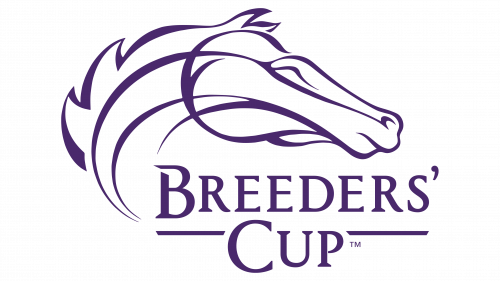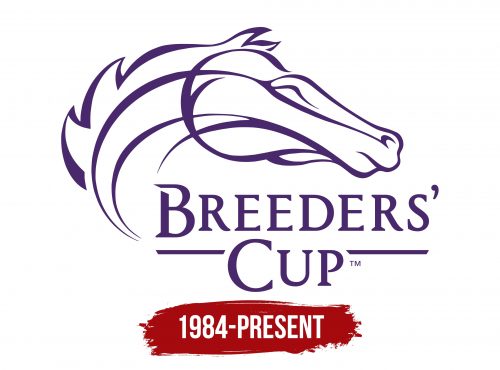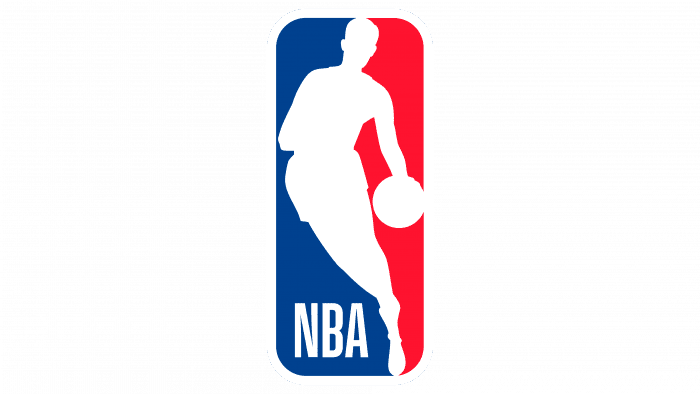The Breeders’ Cup logo exudes sophistication and refinement that matches the brand it represents. With a horse elegantly turning its head to the right as if peering into the distance, the emblem combines grace and strength. The design perfectly complements the typography—confident printed letters arranged in two lines separated by thin stripes. A touch of lavender in the color scheme adds a layer of high aesthetics to the overall composition.
The horse, often regarded as a symbol of grace and power, is the emblem’s focal point. Its side view is captured with fluid lines, creating a gentle and potent image. The design hints at a future of possibilities and opportunities by having the horse gaze into the distance. It’s an eternal look forward, much like the nature of horse racing and equestrian sports, always aiming for new milestones.
The Breeders’ Cup is a prestigious horse racing event, and the logo’s design resonates with this status. The animal’s physique is finely drawn to demonstrate its pedigree and stamina. It’s not just a horse; it’s an embodiment of athletic prowess, standing as a testament to the high caliber of competitors in the event.
The typography holds its own against the compelling equine image. Letters are presented in a robust, bold style, encapsulating both the thrill and authority associated with the event. The two lines of text are separated by slim stripes, creating a visual pause that gives each word its deserved emphasis. This arrangement balances the design, ensuring that the text and the image share the spotlight.
The choice of lavender as a hue injects an aesthetic finesse into the emblem. Often associated with elegance and refinement, this color ties together all the other elements. It provides a final flourish, like a jockey’s cap or a finish line banner, marking the brand as one of distinction and excellence.
The emblem is a microcosm of the event it represents, wrapping the anticipation, the competition, and the sheer majesty of horse racing into one succinct yet intricate visual message. Through its design elements, from the symbol of the horse to the typography and color scheme, the logo paints a compelling picture, encapsulating what the Breeders’ Cup stands for.
Breeders’ Cup: Brand overview
| Founded: | 1984 |
| Headquarters: | Changes yearly |
| Website: | breederscup.com |
Initiated in 1982 by John R. Gaines, the Breeders’ Cup World Championships debuted its first series of Grade 1 Thoroughbred horse races two years later at Hollywood Park. The inaugural event featured seven races and offered $10 million in prize money. The championships underwent significant transformations over the years.
In 2007, the competition extended from one day to two, incorporating three additional $1 million races: the Juvenile Turf, Filly & Mare Sprint, and Dirt Mile. The event continued evolving throughout the 2010s, eventually settling on its current format of 14 races spread across two days.
The year 2015 was notable for seeing the Breeders’ Cup hosted at Keeneland Racecourse in Lexington, Kentucky—the very locale where the concept had originally taken root. 2017, the event broke new ground at the Del Mar racetrack near San Diego. Attendance peaked in 2019 at Santa Anita Park, pulling in a two-day crowd of 118,484 spectators. Yet another benchmark was set in 2022 when the total wagering amount reached $189 million at Keeneland, outdoing the previous year’s record.
From its modest beginnings with seven races in 1984, the Breeders’ Cup has evolved into a grand spectacle featuring 14 races over two days. The event features elite thoroughbred horses worldwide, cementing its reputation as a significant year-end horse racing championship. It continues to shatter previous records in both attendance and global wagering, solidifying its status as a pinnacle gathering in the equine sports realm.




